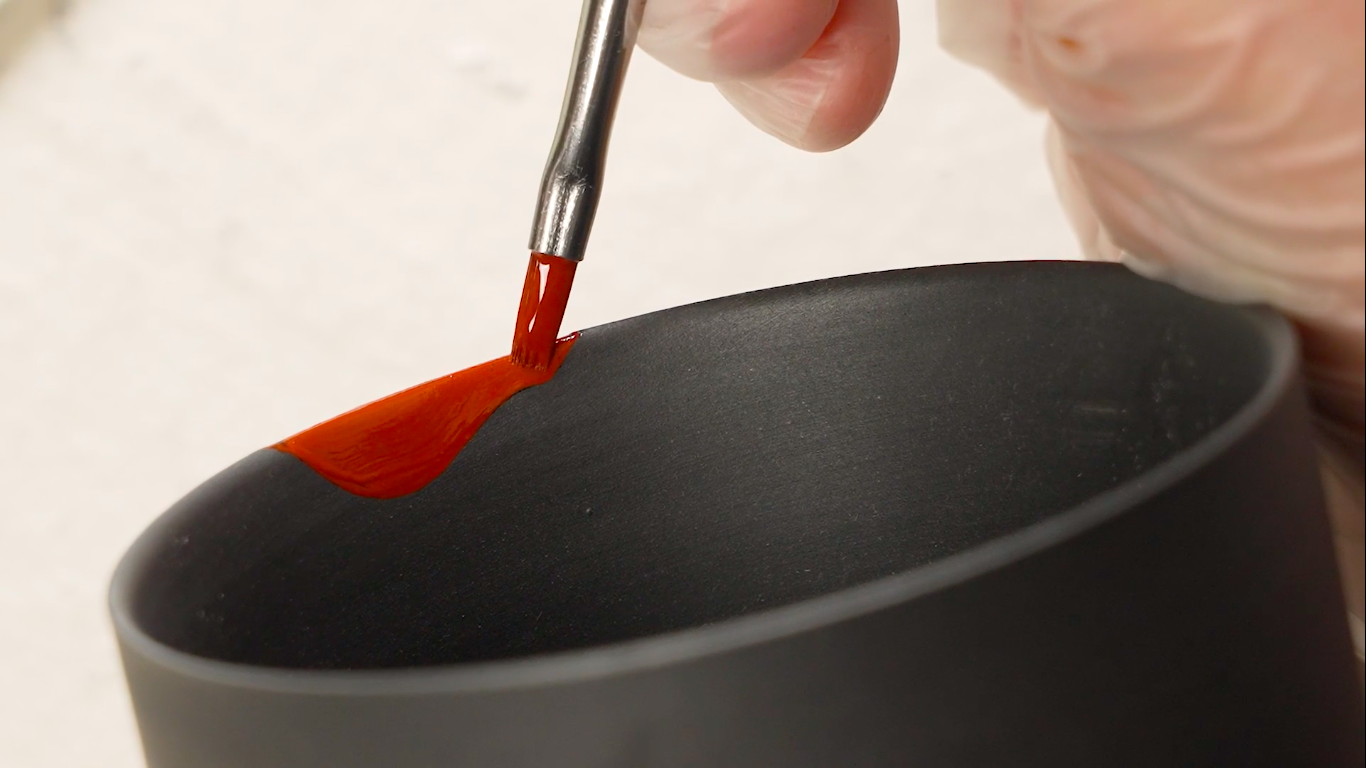All about kintsugi brushes

Brushes are a key tool in kintsugi-repair. Getting comfortable and friendly with your brush, as if it is an extension of your arm, makes the kintsugi experience that much more pleasurable and precise.
Brush Types
I recommend having on hand the following three brushes.
Thin brush - Thin brushes (pictured above) with smooth, long bristles allow you to draw outlines and across very thin lines. While at first, long brushes may feel awkward to use, over time it will help to draw thin lines more steadily than a shorter brush.
Flat brush - Flat brushes (pictured below) are usually shorter and wider, and handy for filling in larger surface areas. Pulling in the urushi that has been applied on the outer edges, toward the center of the repaired area.
Powder brush - Powder brushes made from horse hair is soft and gentle enough to nudge gold powder onto eurushi that has yet to harden.
A thin brush and powder brush are included in our Kintsugi Kit, and all three are included in our Advanced Kintsugi Kit.
All other types of brushes are nice-to-haves and can certainly enhance the repair process once you know exactly what you are looking for. But for all intended purposes, these three brushes are a perfectly enough for your kintsugi journey.

Brush Use
When applying urushi to small, narrow, and intricate surfaces with the thin or flat brush, it's easy to become tense. I cannot over-emphasize the importance of breathing. More specifically, slow and steady exhales as you glide your brush across the surface. Another trick to draw smooth lines with control is to anchor your pinky finger while you make your stroke. By using your pinky finger in this way, less wiggle room is created. The brush becomes secure between your first three fingers and as such only has two directions that it can go - down and toward the surface or up and away from the surface.
The powder brush sweeps gold powder toward the eurushi using the tips of the bristles, while ensuring not to graze it. Then use the side of the body of the brush to smooth and polish the gold powder.
Brush Care
When using a new thin or flat brush, gently press the bristles between your thumb and index finger to loosen the bristles from one another. Then rinse in plant-based oil before rinsing again in turpentine before using.


After every use, clean the thin and flat brush with plant-based oil, gently sandwiching tissue paper and pressing gently. Do avoid wiping your brushes with tissue as it can wear the bristles. Continue this process until you no longer see any urushi staining the tissue.
Before each use, rinse the brush with turpentine and gently sandwich between tissue paper to remove the oil.
The powder brush does not need any treatment.
Happy repairing!
Enjoy 10% Off
Join our Kintsugi Newsletter for tips and techniques, history and cultural context behind kintsugi, and scenes from our Kyoto Studio. Plus, we'll extend a 10% discount on your first order.
We won't send spam. Unsubscribe at any time.




